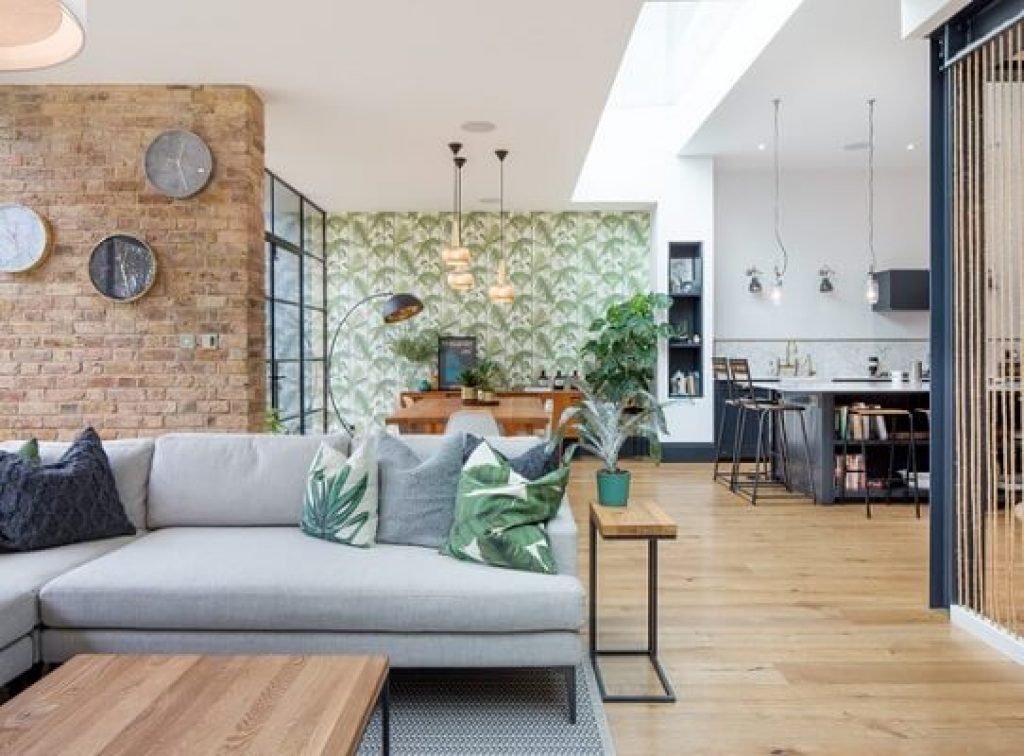Fully furnished properties are popular right now – possibly because people don’t want to have to move their furniture or buy new items for a new place. It’s much easier to rent a home that has everything you need, like a kitchen table, beds, dressers, couches, and more.
For landlords, there are pros and cons associated with providing furnished rentals, and if you’re still on the fence about this, here are some things to consider.

1. Furnished rentals command higher rent
Furnishing your rental properties is a great way to collect higher rent from your properties. Unlike arbitrary rent hikes, raising the rent for a furnished unit won’t deter people from applying. In fact, people who are looking for furnished homes and apartments will expect to pay more and that’s okay because it’s already in their budget.
Generally speaking, you can raise the rent by 10-20%. For example, if the rent would normally be $1400 unfurnished, you could charge $1540-1680 per month.
2. You’ll need to buy the furniture and place it throughout the property
The next consideration is one that turns a lot of people off to renting furnished units. You’ll have to buy the furniture and arrange it throughout the home. This can take quite a bit of time, effort, and money, especially when you get furniture that has to be assembled. It is a big investment all around.
The only way to avoid this extra work is to hire a property management company to do it for you. When you have a property manager handling your rentals, they can hire a crew to put together a fully or partially furnished rental unit on your behalf. It’s not that different from staging a home you want to sell.
For instance, Houston property management companies, like Green Residential, take on all of their clients’ landlord duties. If you hire a property management team, they’ll take care of everything for a monthly fee, and the convenience is worth every penny.
3. Fully furnished properties are better as long-term rentals
If you’re going to provide a fully furnished rental, it’s better to make it a long-term rather than short-term rental. Although you can typically increase the rent for a furnished short-term rental by up to 50%, those are expected to be fully furnished and it’s not likely to produce year-round, consistent rent. Short-term rentals are best partially furnished. You’ll recover more of your costs from fully furnished long-term rentals.
Also Read: Remodeling a Rental Property? Here is Everything You Need to Know
4. You can collect a higher security deposit
For a furnished rental, you can justify a higher security deposit. Your tenants will need to take good care of the furniture and extra appliances provided to them, and a higher security deposit is the only way to compensate for damage or theft.
If a tenant happens to cause extensive damage to your property, but not the furniture, you can still use their deposit to cover the damage. There’s never a downside to collecting a higher deposit.
5. Furnished rentals tend to attract better tenants

Higher-priced rentals tend to attract higher-quality tenants. Usually, when tenants have a higher income, they’re less likely to cause damage. That’s why a lot of landlords won’t accept housing vouchers.
Having good, reliable tenants who take care of your property and pay rent on time is the foundation of your profitability as an investor. If you can increase your chances of getting better tenants just by furnishing your rentals, it’s worth experimenting with at least one property to see how it goes.
6. Your furniture can be depreciated on your taxes
Since the furniture in your rental is used for business, you can claim depreciation deductions on your tax return each year for around 5-7 years.
Protect your investment when furnishing units
You can’t control everything your tenants do, but you can minimize your losses in several ways. For example, raise the rent and security deposit to account for the furnishings, and perform regular inspections at least twice a year, if not quarterly. When tenants know you’re going to be performing inspections regularly, they will be more likely to take good care of your property.
Furnishing your existing rentals may not be the right move, depending on where they’re located. However, in that case, it’s still worth keeping in the back of your mind in case you purchase property in another area that will work well with furnished rentals.